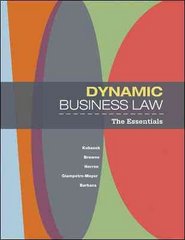Consider the Fisher model of consumption. A household chooses a plan for cur- rent consumption C, and future consumption C2. In the current time period, the household receives income Y, and pays lump-sum taxes 71. In the future, the household anticipates income Y2 and taxes 72. The household can choose to save or borrow at real interest rate / subject to the life-time budget constraint: C + 62 = Y, - T + 12 - T2 *1+r 1+r (a) [4 marks] Illustrate the life-time budget constraint in a diagram. Sketch in- difference curves and explain how the optimal consumption plan is found, showing the case where the household chooses to be a saver (assume this case throughout the remainder of the question). The government plans expenditure G, in the current time period and expenditure G2 in the future, and these plans remain fixed throughout this question. The gov- ernment's choice of taxes must satisfy the present-value budget constraint: G1 + GZ = T1+ T2 1 + 1 1 +r (b) [4 marks] By combining the household and government budget constraints, explain the Ricardian equivalence proposition. Illustrate your answer by show- ing the effects of a deficit-financed tax cut in the diagram from part (a). Suppose the real interest rate r rises. Initially assume no change in taxes 7, or T2. (c) [5 marks] By breaking down the optimal response of the household into in- come and substitution effects, explain why current consumption could rise or fall after the increase in r (recall that the household is assumed to be a saver). Assume the government runs a budget deficit D = G1 - T1 > 0. (d) [4 marks] Using the government's budget constraint, explain why the com- bined present value of all taxes 7, and 72 must rise after the increase in r if spending plans G, and G2 remain unchanged. Using your answer to part (b), draw the position of the household's lifetime budget constraint after the increase in r taking account of the adjustment of taxes 7, and/or T2. (e) [3 marks] Suppose the household's savings were initially invested entirely in bonds issued by the government, that is, S = Y1 - T1 - C1 = D. How would your answer to part (c) change in this case? Explain







